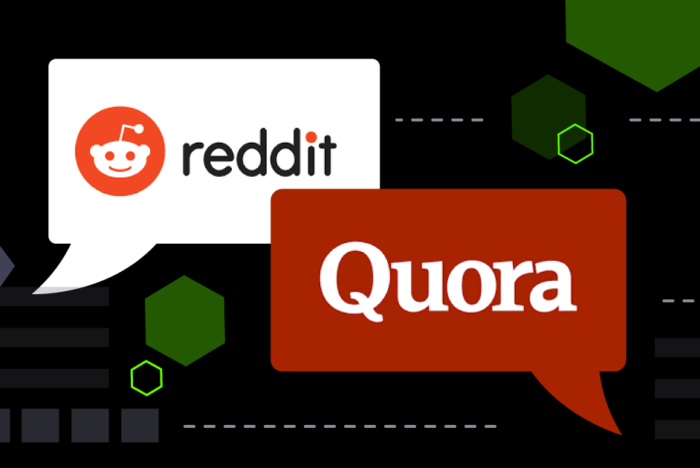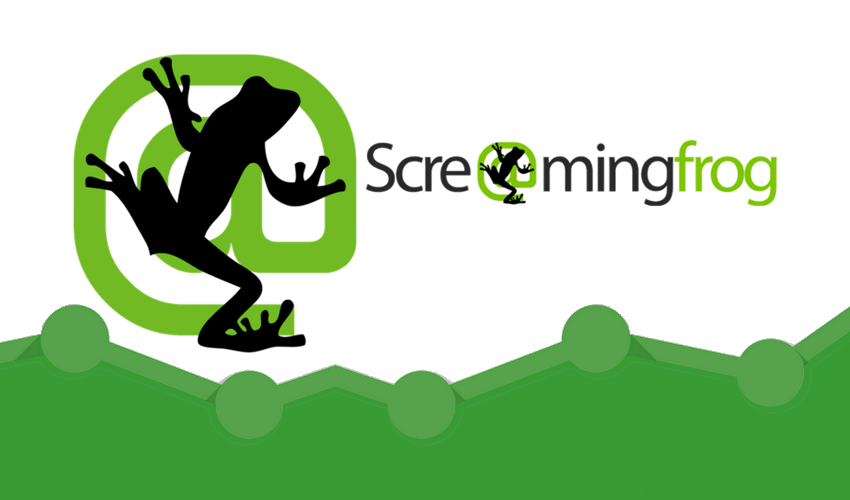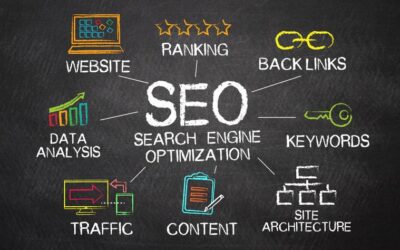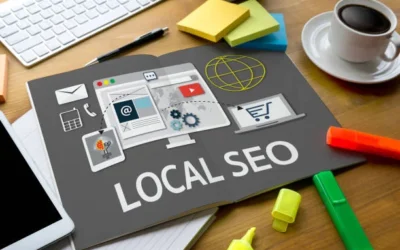What Is Semantic SEO and Why It Matters in 2025
Table of Contents:
- Introduction: Why Traditional SEO Is Not Enough
- What Is Semantic SEO?
- The Evolution of Search: From Strings to Things
- 5 Key Questions About Semantic SEO Answered
- How Semantic SEO Works (With Real-World Examples)
- Best Practices for Implementing Semantic SEO in 2025
- Semantic SEO Tools That Make a Difference
- Common Mistakes and How to Avoid Them
- How Semantic SEO Drives ROI and Business Growth
- What’s Next: Future Trends Beyond Semantic SEO
- Final Thoughts + Strong Call to Action from Excell
Introduction: Why Traditional SEO Is Not Enough
Why?
Because users are asking more complex, specific, and conversational queries, Google has evolved from a keyword matcher into an answer engine powered by AI and semantic technology.
Enter Semantic SEO, the key to connecting your content with what users want and how search engines interpret their needs.
What Is Semantic SEO?

- Entities: People, places, ideas, and things recognized by search engines (e.g., “Excell,” “SEO tools,” “Apple Inc.”).
- Search Intent: Understanding the purpose behind the query: informational, transactional, navigational, or comparative.
- Contextual Relevance: How well your content answers the full scope of a topic.
- Semantic Relationships: How your content connects to related ideas and concepts.
- Structured Data (Schema): Code that helps search engines understand your content better.
The Evolution of Search: From Strings to Things
Google’s journey from interpreting search strings (exact phrases) to understanding things (entities and context) has fundamentally shifted SEO.
Timeline of Semantic Search Milestones:
- 2012 – Knowledge Graph: Google starts using structured data to understand relationships between entities.
- 2013 – Hummingbird Update: Natural language processing (NLP) becomes central to interpreting search queries.
- 2019 – BERT: Bidirectional Encoder Representations from Transformers allow Google to understand sentence meaning better.
- 2021 – MUM (Multitask Unified Model): AI model that interprets information across formats (text, images, video), languages, and topics.
- 2025 – Personalized AI Search: Google’s generative summaries and zero-click results demand even more profound semantic relevance.
5 Key Questions About Semantic SEO Answered
1. What is the difference between traditional and semantic SEO?
Traditional SEO focuses primarily on keywords. It involves optimizing individual pages around single target phrases, aiming to match exact search terms. The emphasis is on keyword placement in titles, headers, and throughout the content.
In contrast, semantic SEO emphasizes intent and context. It seeks to understand the meaning behind a search query and produce content that thoroughly addresses that need. Instead of targeting a single keyword, semantic SEO encourages the creation of content hubs and clusters that comprehensively cover a topic, addressing variations, subtopics, and related entities.
Where traditional SEO ranks based on keyword frequency, semantic SEO ranks based on how well the content fulfills user expectations, connects to established concepts, and integrates into a broader knowledge network. It prioritizes usefulness and relevance over mechanical optimization.
2. How does semantic SEO affect Google rankings?
Semantic SEO has a profound impact on how Google evaluates and ranks your pages. Google’s algorithms now rely heavily on semantic signals to determine a page’s value and relevance.
With semantic SEO in place, your content is more likely to:
- Satisfy search intent, answering the exact question a user has.
- Be seen as comprehensive, covering all angles of a topic.
- Remain reliable and current, matching up-to-date expectations.
- Stay informed about related issues and authoritative sources.
When this level of context is achieved, your pages become prime candidates for:
- Featured snippets
- People Also Ask boxes
- Long-tail and conversational queries
- Voice search results
Most importantly, semantic content increases your site’s topical authority, which Google uses to determine who deserves to rank on the first page.
3. Can semantic SEO be applied to all industries?
Yes, semantic SEO is universal. It can be implemented across any niche or industry, from local businesses to global enterprises.
For example:
- A law firm can utilize semantic SEO to cover a legal topic, such as “child custody,” with related articles on parental rights, court procedures, documentation, and modifications.
- A SaaS company can build a cluster around “project management tools,” exploring comparisons, integrations, pricing models, and user use cases.
- An eCommerce store can use it to organize product guides, how-to content, and buyer FAQs around categories like “kitchen appliances” or “running shoes.”
- A local bakery might optimize for “best cupcakes in Austin” by producing content on flavor trends, baking techniques, and birthday event catering.
Regardless of the industry, semantic SEO enables businesses to target customer intent, deliver educational value, and increase discoverability across various channels, including Google Search, Maps, Assistant, and Discover.
4. Is structured data required for semantic SEO?
Structured data is not optional; it’s essential for fully leveraging semantic SEO.
Structured data (using schema.org markup) allows your content to communicate directly with search engines in a way they can interpret. It provides machine-readable signals that identify the type, purpose, and entities involved in your content.
When you add structured data, Google and other search engines can display rich results, such as:
- FAQ dropdowns
- How-to carousels
- Star reviews
- Event details
- Knowledge graph enhancements
The most commonly used schema types for semantic SEO include:
- Article
- FAQ
- Product
- Review
- Organization
- Event
Without structured data, your content may still rank, but you’re missing the opportunity to stand out visually and earn higher click-through rates from rich result visibility.
5. Does semantic SEO replace keyword research?
Not at all, it enhances it.
Semantic SEO transforms keyword research from a linear task into a strategic, intent-driven process. Instead of finding and repeating a handful of isolated keywords, you:
- Identify your core topic and main user goals
- Uncover related questions people are asking
- Map associated entities and synonyms
- Understand how your topic connects to other relevant ideas
This results in more comprehensive content planning. You’ll generate content maps or topic clusters that reflect real-world conversations, search behavior, and knowledge structure.
In other words, while you’re still doing keyword research, you’re using it to fuel a broader, semantically-rich strategy, one that aligns with how users think, speak, and search.
How Semantic SEO Works (With Real-World Examples)
- Write a blog post targeting “train for a marathon.”
- Use the keyword 15 times
- Add basic H1 and meta tags
- Create a topic cluster:
- Pillar Page: How to train for a marathon
- Subtopics:
- Best marathon training apps
- Nutrition plans for long-distance runners
- Preventing injuries during marathon prep
- Mental strategies for long runs
- Use structured data for How-To markup
- Include related entities: “VO2 max,” “running cadence,” “hydration plan.”
- Answer user questions:
- “What should I eat before a marathon?”
- “How long should I taper?”
Best Practices for Implementing Semantic SEO in 2025
Organize your content into a hub-and-spoke model:
- Hub: Broad overview
- Spokes: Focused deep-dives
This architecture improves internal linking, crawl depth, and context.
2. Incorporate Related Terms and Questions

- Google’s “People Also Ask”
- Related searches at the bottom of the SERP
- Reddit and Quora threads
- SEO tools with NLP data (Frase, Clearscope, Surfer)
Find semantically linked questions and answer them thoroughly.
3. Optimize for Entities
Mention known entities (people, organizations, concepts) relevant to your topic. Link out to their official pages or Wikipedia.
This helps Google associate your content with recognized knowledge bases.
4. Use Schema Markup
Tools like:
Let you add structured data easily without a developer.
5. Write for Conversations, Not Just Keywords
Example:
- Instead of: “Best coffee grinders under $50.”
- Use: “What’s the best coffee grinder I can buy for under $50?”
Semantic SEO Tools That Make a Difference
Semantic SEO isn’t just about theory; it’s about execution. Fortunately, there are several tools available in 2025 that can help you implement semantic strategies more effectively, whether you’re a solo marketer or a large content team.
At Excell, we use and recommend a variety of tools that support everything from entity recognition to internal linking and NLP analysis. Below are the most powerful platforms that can elevate your semantic SEO strategy.
1. Frase
Frase is one of the most popular tools for creating semantic content. It allows you to:
- Generate content briefs based on top-performing pages
- Identify related topics and questions from sources like Google’s People Also Ask, Quora, and Reddit
- Analyze semantic gaps in your content versus competitors
- Receive real-time optimization suggestions as you write
Frase’s AI-driven insights are beneficial for writing content that aligns with user intent while incorporating a wide range of semantically related terms. It’s ideal for blog posts, landing pages, FAQs, and any other content that requires in-depth coverage of a specific topic.
2. InLinks
InLinks focuses on the entity-based SEO side of the semantic equation. It scans your site, identifies key entities within your content, and then suggests contextual internal links to connect related topics across your domain.
Key features include:
- Knowledge Graph building specific to your site
- Automated internal linking recommendations
- Schema generation based on detected entities
InLinks helps you mirror how Google’s Knowledge Graph functions, making your content more interconnected, scannable, and semantically relevant. If you’re working on building topical authority, this tool is a must-have.
3. Surfer SEO
Surfer SEO combines on-page SEO with NLP-based optimization to help your content rank higher in search engine results. Using Google’s Natural Language Processing data, it:
- Analyzes the top-ranking pages for a given query
- Provides a list of semantically essential terms and phrases
- Recommends ideal word count, paragraph length, and media use
One of the standout features is Surfer’s Content Editor, which gives you a real-time content score as you write. It pushes you to use the correct entity mentions and semantic keywords naturally, without stuffing. It’s perfect for crafting content that is competitive, structured, and optimized for search engines’ understanding.
SEMrush offers a powerful topic research tool that helps you discover the whole semantic field surrounding a keyword or theme.
When you input a seed keyword, it returns:
- Related subtopics
- Commonly asked questions
- Headlines and angles used by competitors
- Topic clusters suitable for blog series or supporting pages
This tool helps you plan an effective pillar and cluster strategy, ensuring your website addresses every layer of a given subject. It’s beneficial during the content planning phase, ensuring no relevant topic gets left behind.
5. MarketMuse
MarketMuse specializes in content scoring and competitive analysis. Unlike other tools that focus solely on keyword data, MarketMuse looks at topic coverage, content quality, and semantic completeness.
With MarketMuse, you can:
- Audit your existing pages to find content gaps
- Receive personalized suggestions to improve topical authority
- Create briefs for writers that emphasize entity usage and structure
This tool is ideal for teams working on long-form or cornerstone content, as it provides actionable insights into how to outperform your competition at the semantic level.
This is the actual tool that Google itself uses to interpret content semantically. It allows you to paste in text and see how Google understands your content by breaking it down into:
- Entities (and how they’re categorized)
- Salience scores (how important an entity is to the overall content)
- Sentiment analysis
- Syntax trees and part-of-speech tagging
Using the NLP API gives you firsthand insight into how Google’s algorithms process your writing. If your key entities don’t appear or have low salience, it’s a signal that your content needs improvement.

- Structured data markup is correctly implemented
- Schema errors are detected before indexing
- Internal link structures are sound and support topic clusters
- Duplicate content issues don’t dilute your authority
Common Mistakes and How to Avoid Them
Fix: Focus on coverage and clarity over repetition.
Fix: Use intelligent linking to reinforce topical relationships.
Fix: Add examples, FAQs, expert quotes, and semantic depth.
Fix: Apply schema across all content types from blogs to product pages.
How Semantic SEO Drives ROI and Business Growth
Implementing Semantic SEO isn’t just about better rankings; it’s a long-term business strategy that pays off across every stage of the customer journey. From discovery to conversion and beyond, semantic SEO influences key performance indicators that matter most: traffic, leads, trust, and profitability.
Below are the five primary ways Semantic SEO directly contributes to return on investment (ROI) and overall business growth.
1. Organic Traffic Growth
One of the most immediate and measurable benefits of semantic SEO is a substantial increase in organic search traffic and not just from a single keyword.
Because semantic content is designed to answer a broad range of user questions, one well-optimized page can rank for dozens or even hundreds of long-tail keywords. This includes:
- Variants of the main search term
- Synonyms and related phrases
- “People Also Ask” style questions
- Voice search queries in natural language
For example, instead of just ranking for “project management software,” a semantically-optimized guide might also rank for:
- “Best tools for managing remote teams”
- “Features to look for in a task management app”
- “How to choose the right PM software for small businesses”
This expanded reach increases your search visibility, driving more organic users to your site, even those you weren’t directly targeting with keywords.
Bottom Line: More keywords = more impressions = more visitors, all without increasing ad spend.
2. Higher Conversion Rates
By aligning content with searcher intent, you attract visitors who are more qualified, better informed, and further along in the buyer’s journey. These users are:
- Looking for detailed answers
- Evaluating products or services
- Comparing solutions
- Ready to take action
Because semantic SEO involves answering real user questions, including objections, pain points, and decision-making factors, it helps build trust and confidence before a user even reaches your sales team or checkout page.
For example:
- A blog post titled “How to Reduce Legal Risk in Real Estate Contracts” that answers specific legal concerns might drive highly targeted leads to a law firm.
- A buyer’s guide on “Choosing the Right CRM for Healthcare Providers” may prompt decision-makers to request a demo or consultation.
This context-rich content shortens the sales cycle and boosts conversion rates on both lead generation and eCommerce websites.
3. Enhanced Brand Authority
Over time, this topical depth results in:
- More backlinks from other authoritative websites
- Greater trust signals to Google (important for YMYL Your Money, Your Life topics)
- Increased engagement metrics like time on page and lower bounce rates
- More frequent appearances in featured snippets and knowledge panels
Being recognized as a trusted resource in your niche leads to increased brand recognition and recall. When users repeatedly find your content answering their questions, your brand becomes associated with credibility, value, and leadership.
For example, if you consistently publish detailed content on digital marketing trends, marketers and business owners will begin to view you as a go-to source, leading to increased brand mentions, media visibility, and client referrals.
4. Lower Cost Per Acquisition (CPA)
Unlike paid search or social media campaigns that require constant investment, SEO offers compounding returns over time.
With semantic SEO, your content ranks for a broader array of keywords and maintains its visibility for a more extended period, making it a cost-effective traffic generator. And because the users arriving through semantic search are more qualified, your lead quality improves, reducing the time and money spent nurturing unfit prospects.
Here’s how it reduces CPA:
- No ongoing ad costs for clicks or impressions
- Increased ROI per piece of content
- Greater lifetime value (LTV) from users who convert after engaging with high-quality educational material
- Efficient sales cycles powered by informed leads
When you compare the lifetime value of SEO content against the constant expense of paid ads, the investment in semantic SEO wins out, especially for businesses looking for scalable and sustainable growth.
5. Better Analytics Insight
Semantic content doesn’t just improve what people find; it also enhances what you can measure and optimize.
When your website includes a range of semantically-related content, you’ll gain access to deeper insights in tools like Google Search Console, GA4, and other analytics platforms. These insights allow you to:
- Discover which queries are leading users to your site
- Analyze performance for multiple keyword variations
- Understand which content contributes to conversions even if indirectly
- Segment your audience by intent and behavior patterns
For example, in Google Search Console, you may find that a single blog post ranks for dozens of long-tail keywords you hadn’t even planned for. You can then optimize those pages further or create spin-off content to capture a larger share of the search engine results.
This granularity enables smarter content strategy decisions, an improved user experience, and more targeted content updates, helping you evolve alongside changing user behavior.
What’s Next: Future Trends Beyond Semantic SEO
Semantic SEO is evolving into something even more exciting:
Content suggestions based on future intent, not just past behavior.
Search engines delivering instant answers summarized from your content.
Optimizing for screenshots, video moments, and spoken queries.
Final Thoughts + Strong Call to Action from Excell
In 2025 and beyond, Semantic SEO is not a luxury; it’s the foundation of any effective organic strategy.
It allows your content to be:
- Understood by search engines
- Aligned with user intent
- Competitive against AI-generated noise
- Structured for SERP visibility
- Positioned for long-term authority

At Excell, we don’t just optimize content; we engineer it to thrive in the most competitive digital spaces. Whether you’re building from scratch or upgrading your existing SEO efforts, we’ll help you:
✅ Future-proof your content against algorithm updates
🚀 Let’s turn your website into a semantic powerhouse. Contact us today and Book your free discovery call to get done for your services!
Contact us:
6420 Richmond Ave., Ste 470
Houston, TX, USA
Phone: +1 832-850-4292
Email: info@excellofficial.com







